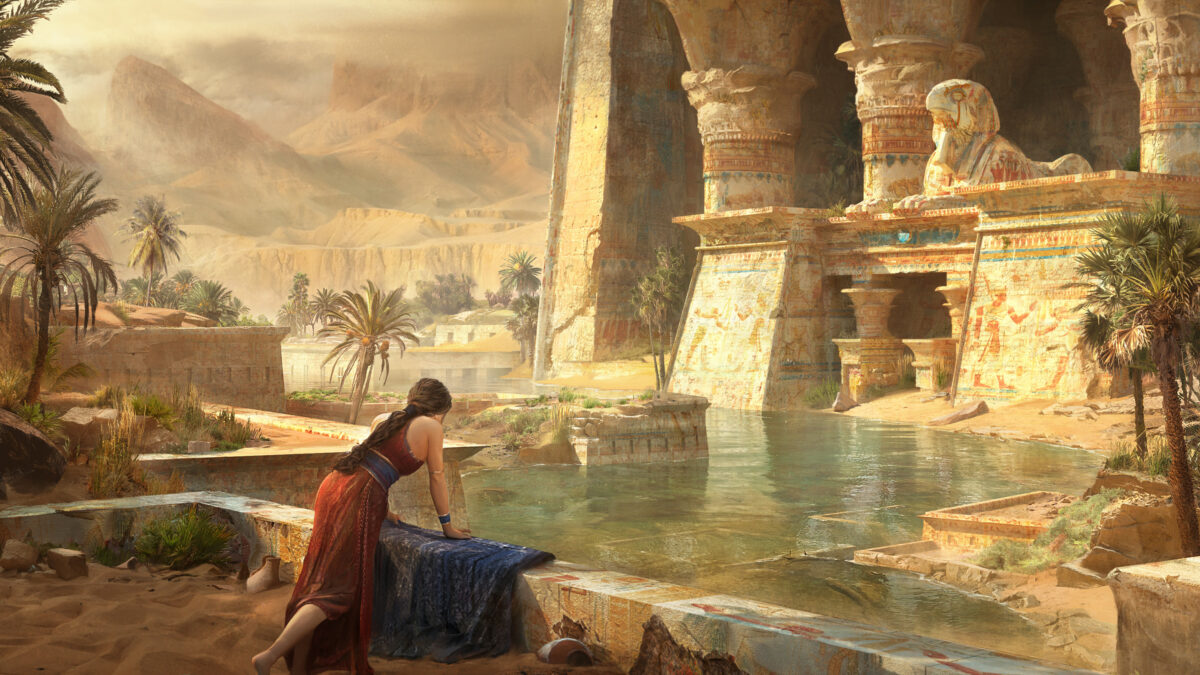Threads of Deception: Netflix Queen Cleopatra

As the first backlash started even before the show initially released. After the first trailer dropped, people kept calling the docudrama out on historical inaccuracies. Now, after people started actually watching the show, it got even worse, as reviews paint Cleopatra as one of the worst shows to ever be released.

Netflix’s queen Cleopatra: Historical representation or revisionism?
The controversy: A question of representation, Netflix’s documentary series, part of the African Queens docuseries produced by Jada Pinkett Smith, claims Cleopatra as an African queen. Smith justifies this choice, asserting that stories about black queens are underrepresented. However, the series› classification as a documentary rather than a fictional work has heightened scrutiny. Critics argue that it perpetuates «presentism» applying contemporary perspectives to historical figures at the expense of accuracy.
The historical debate: Who was Cleopatra?
Cleopatra VII, the last monarch of the Ptolemaic dynasty, has long captivated historians and the public alike. Born in 69 BC, she was renowned for her intelligence, political acumen, and charisma. Historical consensus, supported by sources like Oxford University and Cairo University, holds that Cleopatra was primarily of Macedonian-Greek ancestry. The Ptolemaic dynasty, established after Alexander the Great’s death, ruled Egypt for nearly 300 years and maintained their Greek heritage through intermarriage.
While some scholars have speculated about Cleopatra’s maternal lineage, Betsy Bryan, an egyptologist at Johns Hopkins University, suggests that if her mother were Egyptian, Cleopatra might have had some native ancestry.
How did the general audience react?


The scholarly debate

In a statement on their official website, Egypt’s Ministry of Tourism and Antiquities affirmed, “various antiquities of Queen Cleopatra, such as statues and depictions on coins, clearly portray her with Hellenistic (Greek) features, including fair skin, a prominent nose, and thin lips.»
Roman historians like Plutarch and Cassius Dio, who chronicled Cleopatra’s life, similarly described her as being of Greek descent. Additionally, DNA studies and biological anthropology of remains from Cleopatra’s era including those of her family do not show connections to sub-Saharan Africa. Dr. Nasser Makkawi notes that Cleopatra’s appearance, as represented in both artifacts and written accounts, aligns with the Indo-European characteristics typical of her lineage.

Those who argue Cleopatra may have had African ancestry point to gaps in historical records, particularly regarding her maternal lineage. While her father, Ptolemy XII, was of Macedonian-Greek descent, Cleopatra’s mother is less definitively known. Some speculate that she might have been of Egyptian or mixed ancestry, given Cleopatra’s embrace of Egyptian culture, religion, and iconography.
Egyptologist Dr. Sally-Ann Ashton has highlighted that Cleopatra’s self-representation in certain temple reliefs and inscriptions where she adopts traditional Egyptian dress and religious motifs may suggest an intent to associate herself more closely with native Egyptian traditions. Proponents of this view suggest that Cleopatra’s immersion in Egyptian identity could reflect a broader cultural integration, though definitive physical evidence of African ancestry is lacking.
Did ancient Egyptians really have Sub-Saharan African roots? A scientific examination of genetic evidence
Despite Egypt’s geographical location in Africa, the historical and genetic makeup of Egyptians, particularly in ancient times, reflects a complex blend of Mediterranean, Near Eastern, and North African influences rather than a Sub-Saharan African identity. A genetic study published in Nature Communications on 30 May 2017, titled «Ancient Egyptian mummy genomes suggest an increase of Sub-Saharan African ancestry in post-Roman periods,» provides significant data to support this distinction.
This study analyzed genome-wide data from 90 mummies spanning approximately 1300 years (1388 BCE to 426 CE). The results indicate that ancient Egyptians were genetically closer to ancient populations from the Levant, Anatolia, and Eastern Mediterranean regions. The genetic affinity of these mummies was far more aligned with modern-day Near Eastern populations than with Sub-Saharan Africans. Specifically, the data revealed minimal Sub-Saharan African ancestry in the ancient Egyptian samples prior to the Roman period, suggesting a stable genetic continuity in the Nile valley for over a millennium.
The increase in Sub-Saharan African ancestry only occurred after the Roman period, as indicated by a rise in genetic markers associated with Sub-Saharan populations. This shift can be attributed to increased trade, migration, and the introduction of African slave routes during the later historical periods. The genomes of modern Egyptians reflect this more recent mixture, with approximately 8-20% of modern Egyptians’ ancestry traced back to Sub-Saharan Africa – a significant rise compared to ancient Egyptian populations, where this ancestry was negligible.
The 2017 study makes it clear that the genetic composition of ancient Egyptians, particularly during the time of Cleopatra (69-30 BCE), was far more Mediterranean and Near Eastern than Sub-Saharan. Even if her mother was Egyptian.
Conclusion
The debate over Cleopatra’s racial identity encapsulates broader tensions about historical representation and cultural ownership. Most evidence points to her Macedonian-Greek ancestry, supported by historical accounts, statues, coins, and genetic research. However, ambiguities in her maternal lineage leave room for alternative interpretations.
Ultimately, Cleopatra’s legacy is far more significant than the modern debates over her ethnicity. As a skilled diplomat, strategist, and ruler, she bridged the worlds of Greek and Egyptian culture, leaving an indelible mark on history. The challenge lies in respecting historical accuracy while appreciating the complexity of Cleopatra’s identity – a legacy that transcends the boundaries of race, culture, and time.
Sources and investigation materials:
- BBC middle east
- Los Angeles Times
- EgyptiaStreets
- Wion
- Foreign Policy
- The Guardian
- NBC News
- The NewYork Times
- The Telegraph Uk
- Egyptian Independent
- The Economist
- IMBD
- Rotten Tomatoes
- Unilad
- X – Egyptian Ministry of Tourism
- Times of India
- Alarabiya English
- Facebook – Egyptian Ministry of Tourism
- Arab News
- Egypt Today
- Oxford
- Cleopatra: A Biography By Duane W. Roller
- The Reign of Cleopatra By Stanley Mayer Burstein
(twb)
Self-Reflection
I have always been someone who likes to dig a little deeper, to check the facts, especially when it involves my homeland, Egypt. So, when I heard about the controversy around Cleopatra’s portrayal in a Netflix documentary, my curiosity has rised. Especially when I had to watch the series to even check more the historical fact they have represented in the story. I knew this would be more than just an article for me. Cleopatra represents a part of Egypt’s rich legacy, and I felt a sense of responsibility to explore the truth as fully as I could.
The media nowdyas is so powerful, and I believe it has an incredible ability to shape how people think, sometimes without them even realizing it. With the rise of technology and popular streaming services like Netflix, it’s easier than ever for organizations, governments, or even powerful individuals to influence public perception. Most people don’t have the time or interest to fact-check. They msotly watch and absorb, taking things at face value. And that’s exactly where I felt the importance of this article to encourage readers to question and think critically, especially when it comes to history and identity.
Challenges
It’s not easy to create an article that respects every angle, especially when the story is so charged with cultural pride and differing beliefs. On the one hand, historians were calling the documentary inaccurate; on the other, there was the team, who had their own reasons for presenting Cleopatra in a particular way. I found myself constantly checking in to ensure I wasn’t overlooking any crucial voices. To complicate matters further, some scholars supported the opposing side, arguing that the portrayal was valid and historically grounded, adding more layers to an already complex debate.
What I Learned
I realized that, in a world where most people only hear one version of a story, it’s essential to be that person who digs deeper. I also learned that even when tackling serious topics, a bit of humor helps lighten the load, even reminding readers that history is not just dusty facts but a part of who we are today.
What I’m Looking Ahead for
I now feel even more committed to fact-checking and telling stories that encourage others to question what they see on screen. I’ll carry this curiosity and dedication with me, knowing that sometimes, all it takes is one well-researched article to help people see things differently. And that, to me, is always worth the effort.
